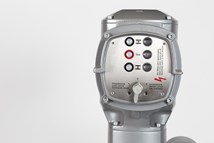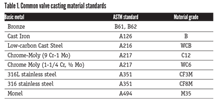
Virtual work and the workplace and how employees and employers are adjusting to evolving needs and expectations. Photo Credit: Andrew Neel
The coronavirus pandemic is “the opportunity we never asked for,” said Victor Reyes, managing director at Deloitte, in a recent webinar and virtual panel presented for VMA members. Reyes reviewed trends in work and the workplace. Kevin Kemerer, owner of Precision Pump & Valve Service and a member of the Valve Repair Council, and Roderick Stanley, CEO of VMA member Fetterolf Corporation, joined the discussion
Three in five workers who have been working remotely during the pandemic say they would prefer to continue working at home after the pandemic. Fifty percent of workers believe they are as productive at home as they are at the office.
Among corporate CEOs, 32% expect one-third of their workforce to be remote in January 2022 and 76% of CEOs expect to require less office space than before the pandemic.
The effects of working at home have been perhaps surprising. Of the companies surveyed, 69% said their employees’ productivity at home was the same (30%) or higher (39%). As for innovation, 63% said it was the same (23%) or higher (40%) among employees at home than it had been in the office. Among employees, 64% said their satisfaction with their work-life balance was the same (14%) or higher (50%) working at home instead of on site.
Among the businesses Deloitte surveyed, attitudes toward this new way of working covered the whole spectrum, from regarding remote work as a temporary phenomenon to reinventing how the office is used to planning to abandon office space entirely.
In the next year or so, Reyes said, the challenges will continue to be how to give workers what they need to work effectively from home and maintain their well-being and empowerment. This will develop the company’s culture and sustainable productivity.
- Clear and frequent communication between management and employees (in both directions)
- Identification of high-value work and how to execute it effectively
- Simplification of decision-making processes
- Recognizing individual work preferences and schedules
- Use of collaboration tools to enable work across personal schedules and time zones
- Fostering employee growth by providing mentorship and learning experiences
Looking forward into 2022 and beyond, companies will likely rethink what the work is, where it is done and who does it, Reyes said.
MAKING IT WORK
About half our staff who were in the office are now at home, Stanley said. “We have found that the design engineers who know exactly which part or subassembly they are designing work very well from home. Not only that, but their productivity has gone up by 10 to 15%.” Interestingly, half those people don’t want to stay at home, he said.
Even before the pandemic, Kemerer said, sales staff worked remotely and technicians worked at job sites. “We already had people in the field who work virtually, so maybe we’re ahead [of the trend] and didn’t even know it.”
Kemerer told about a safety meeting that took place during the pandemic. “It’s hard to get 90 people together at the hub.” With a virtual meeting, everyone could attend and people in the field could save hours of travel time.
To keep up communications with employees, Kemerer said, he delivered a video state-of-the-company talk and does monthly video communications to provide clarity and reassurance. “Though it’s not face to face, it’s more frequent, he said. “I think that better communication helps us retain talent.”
AT HOME VS. IN THE PLANT
In this sort of situation, disconnects or hard feelings could occur between the staff who can work from home and the people on the shop floor who are essential workers and have to come to work every day. Reyes asked the panelists what they had seen.
“People understand. There aren’t hard feelings,” said Stanley. “It’s not that people aren’t working. They are at home, working.”
Kemerer agreed that people understand. “I don’t know for how long. It could be a challenge for management. We need to work on communication and culture. I think some of my remote people would love to come in every day and not have the dogs barking in the background of their calls. There are challenges on both sides.”
At first, Stanley said, his company thought that people older than, say, 40, would not want to stay at home. “It’s turning out that they are much more comfortable at home.” The younger workers seem to need more communication. In the industry it generally takes six months to get someone up to speed or as long as two years for a valve engineer, he said. People on that learning curve need people with whom they can interact, talk about technical issues and bounce ideas around.
STAFFING
When Stanley talks with other folks in the valve industry, they say their most pressing issue is finding and retaining good staff, particularly in the workshop, but also, to a certain degree, in the office. If the technologies enabling remote work give an advantage in finding and keeping staff, it would be a massive improvement, he said.
It is both easier and harder to find talent “We did a Zoom video interview with someone in California last week,” Kemerer said. Since his company is in a rural area, the option for virtual recruiting and working opens up welcome possibilities. “If we can be on the forefront instead of resisting, it can give us a competitive advantage.”
LOOKING AHEAD
The advantages of virtual work are many, Reyes said. The benefits to companies include real estate and labor savings, access to a wider range of talent and increased employee engagement. On the workforce side, the benefits include flexibility to travel while working, cost savings and increased well-being.
A trend toward remote and hybrid work has been growing for the past 15 years, according to Reyes. The pandemic suddenly accelerated it. Time will tell whether and how much virtual work will become the new normal.
BARBARA DONOHUE is a freelance technical journalist and former Web editor of VALVE Magazine.
RELATED CONTENT
-
Creating a Standard for Severe Service Valves
Severe service valves are offered in several standard designs, including non-return, isolation and control types.
-
Piping Codes and Valve Standards
As with every intended use for valves, piping carries its own set of standards that valve companies and users need to understand.
-
Beauty or a Beast? Using NDE on Valve Components
When it comes to valves, “beauty is only skin-deep” is often a true statement. Since Superman and his X-ray eyes don’t really exist, there is no way to verify the quality of a valve or valve component just by looking at it.








 Unloading large gate valve.jpg;maxWidth=214)


